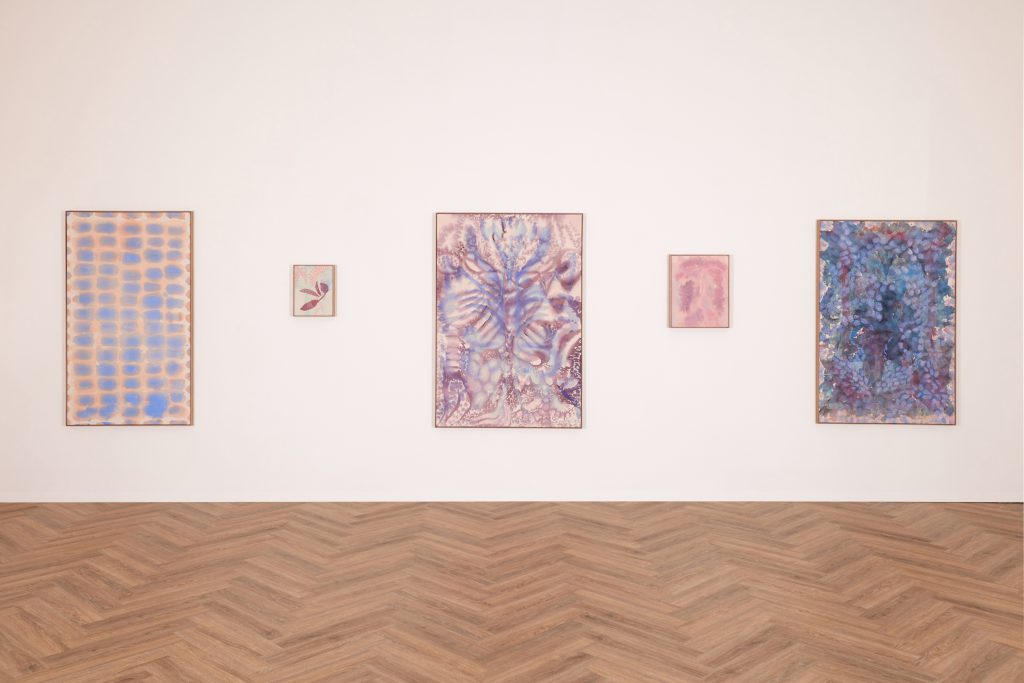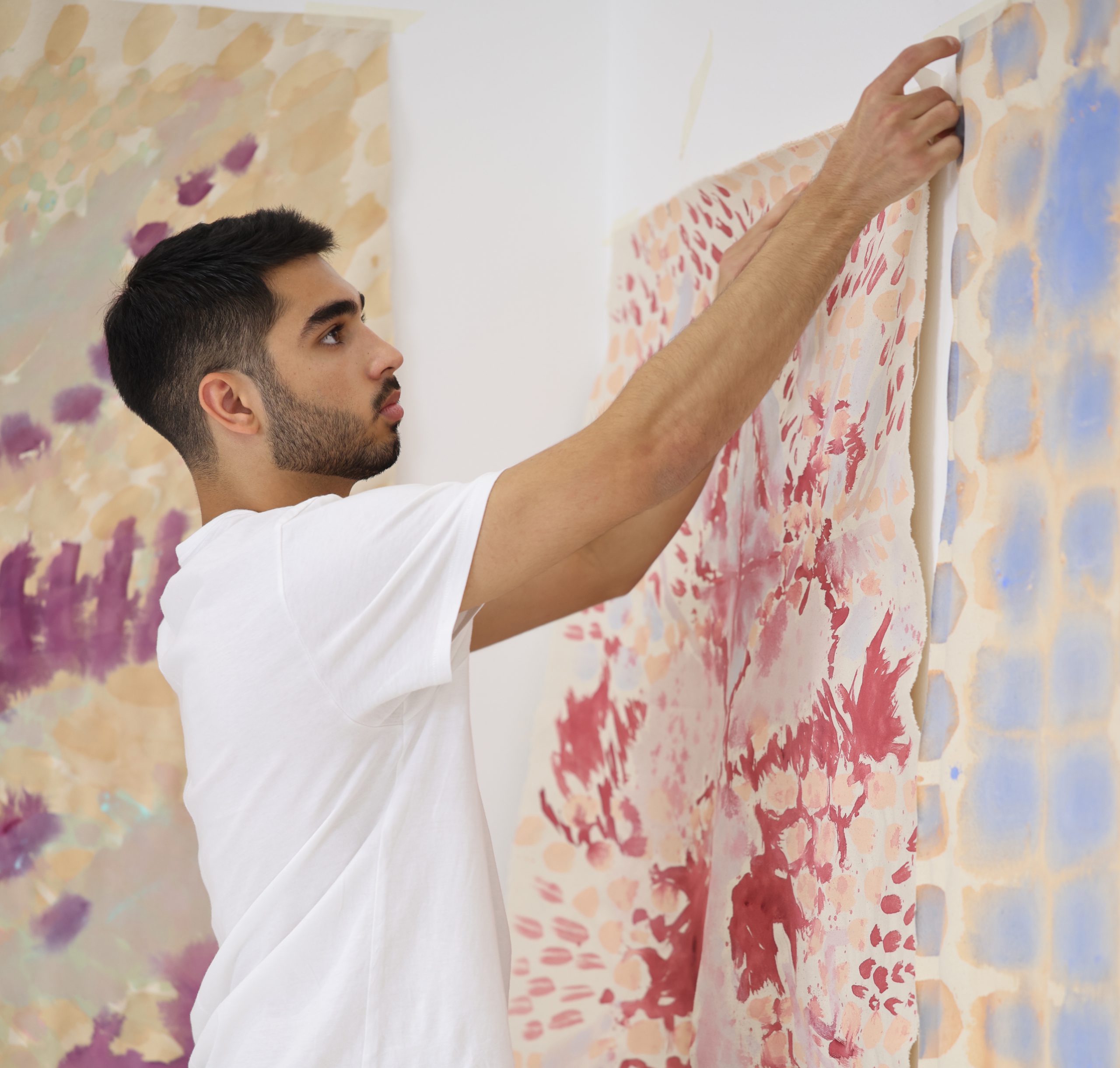The Emirati artist is currently completing his bachelors degree at the School of the Art Institute of Chicago, and talks exclusively to Canvas about exploring the links between nature, humans and spirituality.
How does nature inspire your work?
Ziad Al Najjar: I’m trying to recreate the patterns found in nature and am especially interested in the interplay between naturally occurring organic forms and construction and anatomical bodies. I also try to capture a sense of experiencing nature in an abstract way.
Are there any memories in particular that prompted this exploration?
I have vivid childhood memories of Dubai’s Safa Park and particularly Al Khazan Park with its water tower, which I think about when considering human structures, nature and the spiritual dimension. It’s interesting because that park encapsulates those three things. It’s nature, as we are familiar with it – there’s grass, flowers and trees; then there is the water tower, a human intervention and a construction within nature; plus the tower has patterns and ornamentation, which you could say are religiously or spiritually informed.
If experiencing nature can create a spiritual connection, what happens if the experience is solely due to human intervention? What happens to the spiritual if the experience is curated?
My experience is of course very different to someone living, say, 5000 years ago. I can only experience nature as it is it now, which is very informed by human impact, by construction and industrialisation. There’s a kind of battle between nature and the constructed. I’m almost trying to grasp onto the beauty of pure nature, but realise also that I’m inevitably influenced by our own day and age, by aspects such as technology, imagery and hyper-social media.
Is there anywhere that you’ve been that you could call your purest experience within nature?
I would say farmland. My family has a farm in Hatta, and the landscape there is very different. It’s mountainous and almost looks like Mars! But when I go there, I feel encapsulated by nature because it’s my entire surrounding, just open land and fields, a sublime experience. I remember how, when I used to visit family in the USA, in South Dakota, I found the nature there so drastically different. My great-grandma’s house is in a town with 700 people and just one road that takes you in and out. It’s a tiny place within so much nature, incredible and serene.
Tell us about your process and why you work on unstretched canvas.
I try to break away from traditional conventions, rather than thinking of the painting on a stretcher and a white, square surface. I treat it like fabric or a tapestry, where there is more engagement between my body and the work because it’s more tactile. The qualities of fabric also add to the process, for example, via the looseness of the material or the creasing. Working unstretched allows me to be more creative and it’s become very much a part of my practice and is still developing.

In which directions is your work now heading?
Right now I’m working on a duo show with my brother, Talal Al Najjar, which will be held at NYU Abu Dhabi (NYUAD) and curated by Tala Nassar, and also an exhibition at ICD Brookfield in Dubai later this year. I’m trying to be very particular about the works and am seeing a development in my ideas as I’m working in dense layering with lots of subtlety. I’m expressing this particularly through the choice of colours and composition, which play with theory, perception and obscured visibility while still being somewhat grounded in nature and organic forms. I tend to work intuitively as a painter and so enjoy working freely and feeling out the process as I go along. The actual experience is important to me.
You spoke earlier of human intervention. Would you ever create your own intervention in nature?
I like the idea of intervening in existing spaces of human interventions of nature, for example, constructed spaces of domesticated animals and agriculture. This is an idea that can also expand in different directions. Could a goat pen be considered a valid space for art as well? I think so, or at least it offers an alternative space for art to exist which doesn’t remove it from the world or context. This is something I’m interested in pursuing.
Do you find there’s a universality among obscured and organic shapes?
Yes. I’m interested in organic forms and the patterns that emerge, so there’s definitely a universality involved. I’m looking at nature and the organisms that pervade the world we live in, animals, plants and our bodies etc, and I mesh them all together. I also talk about the spiritual dimension in my work. Across time, nature and art have depicted spirituality, higher powers or transient spaces, with different layers and cultural beliefs.
In terms of history and the spiritual connection to nature, you are also inspired by Islamic miniatures. How does this translate to contemporary painting?
It’s something that I started looking into at the museum that is connected to my school here in Chicago. The majority of art history tuition comes from the Western canon, so I was looking for something I felt more immediately connected to. The Islamic collection has some beautiful artworks that date back to the 16th century, including miniatures. I started thinking about the relationship between the figures and the structures in the paintings, such as interior spaces, as well as the interactions between nature, the animals and plants, and the spiritual, and how these situations are composed. All of these things are captured in the paintings, which to some extent capture the essence of culture itself.
Back home in the UAE, culture and religion are somewhat synonymous. I’m also interested in the Patterns and Decoration Movement that started in the 1970s in New York. It was very much about breaking away from the conventions of fine art, which at the time was all about minimalism and abstract expressionism. The crossing of time and cultures is also important in my work. My father is from Dubai and my mother is from New York City, so both sides have there own particular set of cultural histories and stories. The parallels, differences and nuances between the two have always influenced me.
This interview first appeared in Canvas 108: The Root of It All



